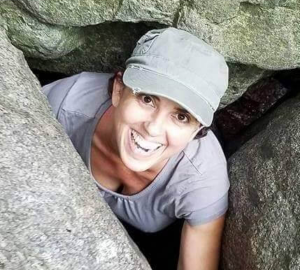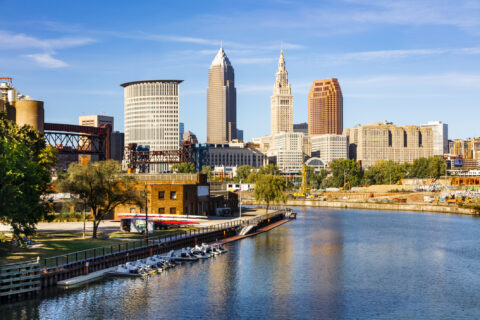The Power of Partnerships: Grand Rapids, MI has become a national leader in connecting children to nature was originally published on Finding Nature News from the Children & Nature Network in October 2020.
In Grand Rapids, MI, every eighth-grader in the public schools puts on a life jacket, grabs a paddle, and learns to canoe. Many have never set foot in the Grand River, which runs through the city. But that’s the point—helping young people feel comfortable and safe in Grand Rapids’ natural environment.
On other days, hundreds of school-aged children spend the morning picking up trash along the banks of the Grand. Another 500 children spend a day planting tree saplings in neighborhoods lacking tree canopy. Both activities give young people opportunities to care for and improve the city’s natural environment, nurturing a sense of stewardship and a culture of service.
On the other side of the city, a group of school children and teens help design a nature-based play area using downed tree stumps. The new park is part of the city’s commitment to green schoolyards and the Mayor’s efforts to incorporate youth voice into park design to build ownership and trust.
These are just a handful of examples of how the City of Grand Rapids is connecting children to nature. In all these efforts, two principles contributed to success: 1) nature connection strategies are intertwined with other core city priorities, and 2) partnerships drive change.

“There’s a way that you can articulate how important [children and nature] work is to all priorities in the city,” said Grand Rapids Mayor Rosalynn Bliss. “I personally don’t see them as mutually exclusive. My philosophy is you need all these pieces together to have a great community. You need an intertwining of all these issues.”
That vision is what drove Mayor Bliss and her team to join the Cities Connecting Children to Nature (CCCN) initiative, a national partnership between the National League of Cities and the Children & Nature Network. Grand Rapids was one of seven pilot cities to join CCCN in 2016. Since then, they’ve received technical assistance and grant support to execute several nature connection strategies, including a green schoolyards initiative that is creating five school-based green spaces in the city’s poorest neighborhoods.
“Since joining CCCN, Grand Rapids has moved into a position of national leadership in connecting children to nature more equitably,” said Jaime Zaplatosch, Director of Green Schoolyards for Healthy Communities for the Children & Nature Network. “The Grand Rapids success story is about partnerships.”
This includes a partnership between the city and the school district to provide open access to green spaces on school grounds. It’s also about demonstrating the potential of private-public partnerships. The city has leveraged tax-payer dollars and private grant funding to provide residents with the greatest possible impact.
Since joining CCCN, Grand Rapids has moved into a position of national leadership in connecting children to nature more equitably. The Grand Rapids success story is about partnerships.
Jaime Zaplatosch, Director of Green Schoolyards for Healthy Communities for the Children & Nature Network
“The work is guided by a shared city and school-district vision that all children deserve safe access to the outdoors,” said Zaplatosch. “Then they bring in local nonprofits and private grant funding to augment taxpayer dollars. They’ve really maximized innovative funding models to get tangible results.”
In 2013, city residents passed a dedicated tax to fund capital investment projects to build city parks. That tax became permanent in 2019 and will now fund investment in park activation and recreation. Signs of the city’s activity in its greening efforts are evident with the recent completion of a green schoolyard and nature playscape at Burton Elementary and Middle School.
“While funding is essential to the project’s execution, the partnerships spark the ideas, gather critical support and ensure success,” said Zaplatosch.
The city is also intertwining priorities and partnerships in how it maintains its parks and tree canopy. For example, the Mayor’s summer youth program partners with local youth-service nonprofits to pay young people to plant and water the city’s trees. Teens involved in this “Green Team” gain summer employment and learn environmental stewardship while serving a critical city need.
None of these projects are unique on their own. For Grand Rapids, it’s more about their impact as a whole. It is the combination of merged priorities and maximized resources that leads to greater impact.
“Whether it is violence prevention, crime prevention, affordable housing, or racial equity, we can talk about the importance of connecting children to nature, making sure that children and families are at the heart of it,” said Mayor Bliss.










